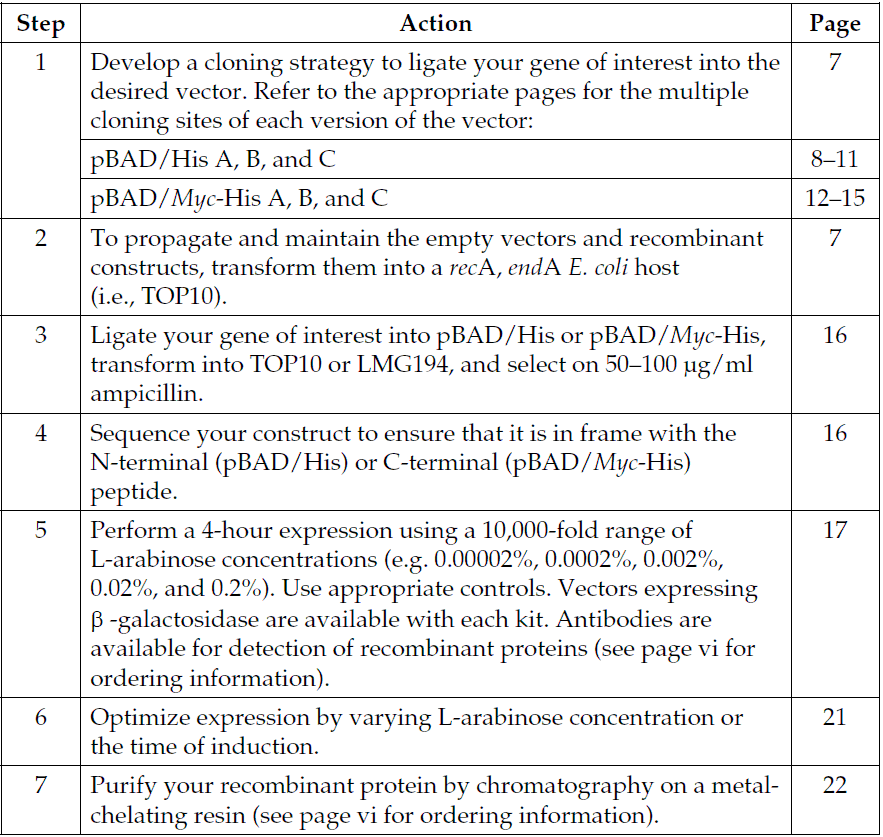pBAD/His和PBAD/Myc-His载体质粒是衍生于pBR322载体。载体设计用来在大肠杆菌中进行可调节,剂量依赖性的表达和纯化重组目的蛋 白。使用大肠杆菌araBAD启动子(pBAD)增强了大肠杆菌重组蛋白可溶性表达的水平。pBAD/His和pBAD/Myc His载体上的调节蛋白AraC能够调控pBad启动子。
pBAD/His A,B,C 载体介绍 The pBAD/His Kit provides all of the necessary reagents to express your protein in a tightly regulated fashion.
The vector pBAD/His allows you to express your protein with an N-terminal tag. The vector provides:
The araBAD promoter for tightly regulated expression
Translation initiation signals optimized for E. coliexpression
N-terminal polyhistidine (6xHis) tag for purification with nickel-chelating resin and detection with an Anti-
HisG Antibody
N-terminal Xpress epitope for detection and analysis with an Anti-Xpress Antibody
Enterokinase cleavage site for removing the N-terminal tag following purification
Three vectors are provided (A, B, and C). Each has the N-terminal tag in a different reading frame relative to the multiple cloning site to simplify in-frame cloning of your gene.
The pBAD/His and pBAD/Myc-His plasmids are pBR322-derived expression vectors designed for regulated, dose-dependent recombinant protein expression and purification in E. coli. Optimum levels of soluble, recombinant protein are possible using the araBAD promoter (PBAD) from E. coli. The regulatory protein, AraC, is provided on the pBAD/His and pBAD/Myc-His vectors allowing regulation of PBAD. L-阿拉伯糖调控表达 In the presence of L-arabinose, expression from PBAD is turned on while the absence of L-arabinose produces very low levels of transcription from PBAD (Lee, 1980; Lee et al., 1987). Uninduced levels are repressed even further by growth in the presence of glucose. Glucose reduces the levels of 3′,5′-cyclic AMP, thus lowering expression of the catabolite-repressed PBAD promoter (Miyada et al., 1984). By varying the concentration of L-arabinose, protein expression levels can be optimized to ensure maximum expression of soluble protein. In addition, the tight regulation of PBAD by AraC is useful for expression of potentially toxic or essential genes (Carson et al., 1991; Dalbey and Wickner, 1985; Guzman et al., 1992; Kuhn and Wickner, 1985; Russell et al., 1989; San Millan et al., 1989). For more information on the mechanism of expression and repression of the ara regulon, refer to Schleif, 1992.

